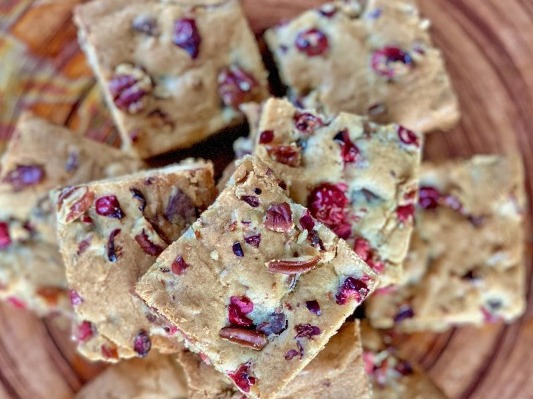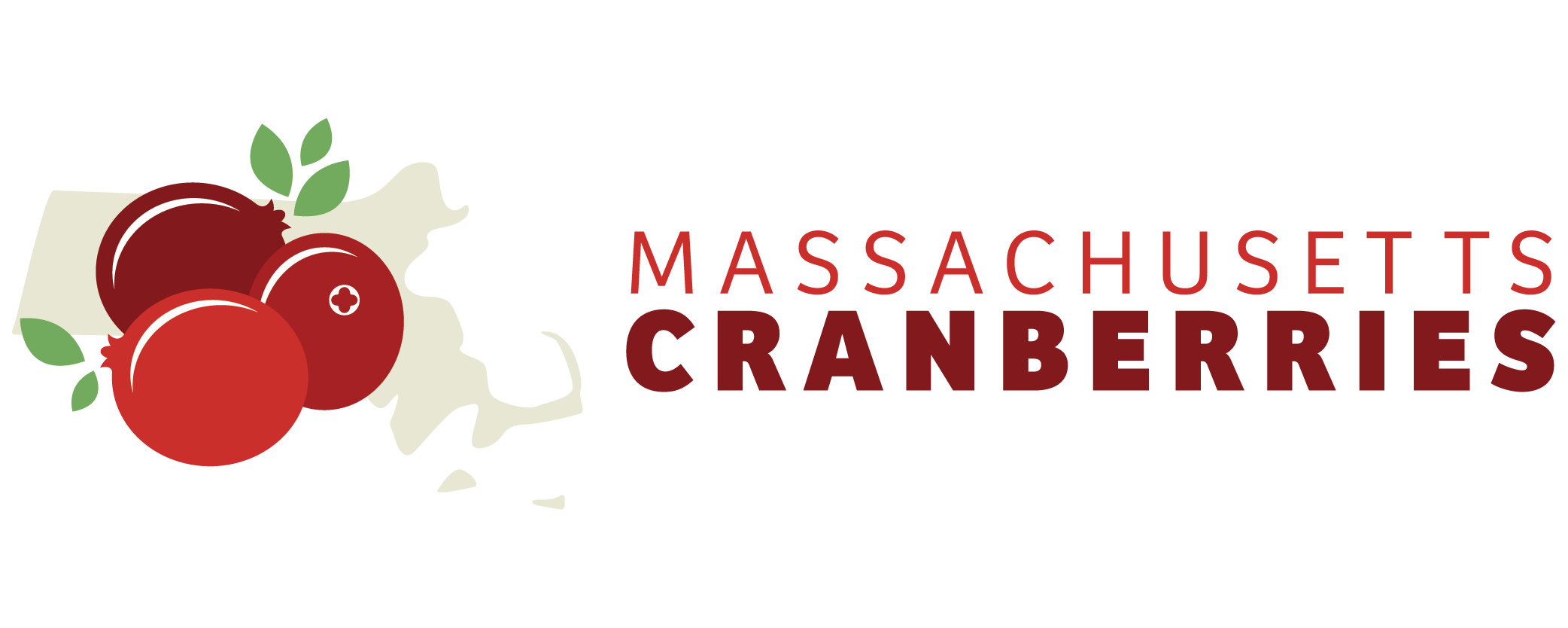Cranberry Congo Bars
Bringing the Bog Home: Grower Favorite Cranberry Recipes
“I’m sharing my mother Nina (Natalie) Atwood’s recipes. They originated initially from my grandmother, preserving them for our multi-generation grower family. My mother and I both have often typed our favorite recipes on old-school typewriters, a treasured method of documenting these holiday season star dishes.”~ Susan Gilmore, Gilmore Cranberry Co., Carver
Source: Cape Cod Cranberry Growers' Association & Susan Gilmore, Gilmore Cranberry Co.

Ingredients
2¾ cups flour
2½ teaspoons baking powder
½ teaspoon salt
3 eggs
⅔ cup butter or margarine, softened
2¼ cups light brown sugar
¾ cup semisweet chocolate chips
1 cup chopped fresh or sweetened dried cranberries
½ cup nuts of choice, coarsely chopped
Method
Preheat the oven to 350° F.
In a medium bowl, combine flour, baking powder and salt.
In the bowl of a stand mixer, or in a bowl with a hand mixer, cream butter and brown sugar. Beat in eggs one at a time, followed by flour mixture, until thoroughly combined. Stir in chocolate chips, cranberries or sweetened dried cranberries and nuts, if desired.
Spread into a greased 9x13" baking pan, and bake for 30-40 minutes, until a toothpick or cake tester comes out clean when pressed into the center of the bars.
Cool to room temperature and cut into bars or squares. Store up to 3 days in a tightly sealed container at room temperature.
Cranberry Impact
Cranberries are native only to North America and southeastern Massachusetts is the birthplace of the commercial cranberry industry.
Cranberries are the No. 1 food crop in Massachusetts. The industry supports nearly 6,400 jobs and contributes an economic impact of $1.7 billion annually.
Cranberry growers farm more than 11,500 acres of cranberry bogs in southeastern Massachusetts. With 3-5 acres of support land for every acre of active bog, the cranberry industry protects 60,000 acres of open space.
Learn what's happening on cranberry farms this time of year:

Fall is all about cranberry harvest, with 95% of the crop picked by the end of October. After harvest, the bogs begin to go dormant and growers start their off-season maintenance program including cleaning ditches, pruning vines, repairing flumes and dams.
